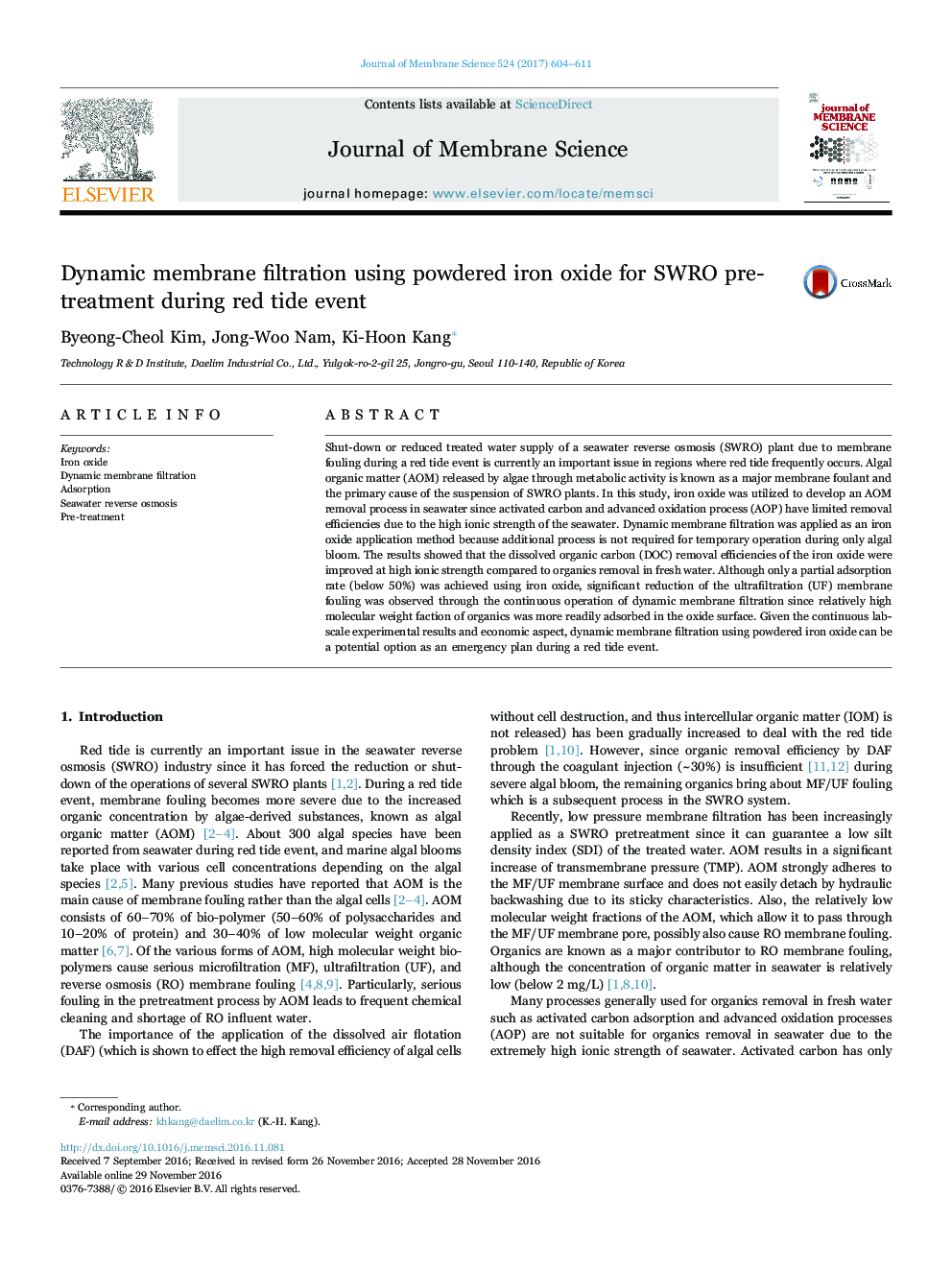| Article ID | Journal | Published Year | Pages | File Type |
|---|---|---|---|---|
| 4989246 | Journal of Membrane Science | 2017 | 8 Pages |
Abstract
Shut-down or reduced treated water supply of a seawater reverse osmosis (SWRO) plant due to membrane fouling during a red tide event is currently an important issue in regions where red tide frequently occurs. Algal organic matter (AOM) released by algae through metabolic activity is known as a major membrane foulant and the primary cause of the suspension of SWRO plants. In this study, iron oxide was utilized to develop an AOM removal process in seawater since activated carbon and advanced oxidation process (AOP) have limited removal efficiencies due to the high ionic strength of the seawater. Dynamic membrane filtration was applied as an iron oxide application method because additional process is not required for temporary operation during only algal bloom. The results showed that the dissolved organic carbon (DOC) removal efficiencies of the iron oxide were improved at high ionic strength compared to organics removal in fresh water. Although only a partial adsorption rate (below 50%) was achieved using iron oxide, significant reduction of the ultrafiltration (UF) membrane fouling was observed through the continuous operation of dynamic membrane filtration since relatively high molecular weight faction of organics was more readily adsorbed in the oxide surface. Given the continuous lab-scale experimental results and economic aspect, dynamic membrane filtration using powdered iron oxide can be a potential option as an emergency plan during a red tide event.
Related Topics
Physical Sciences and Engineering
Chemical Engineering
Filtration and Separation
Authors
Byeong-Cheol Kim, Jong-Woo Nam, Ki-Hoon Kang,
